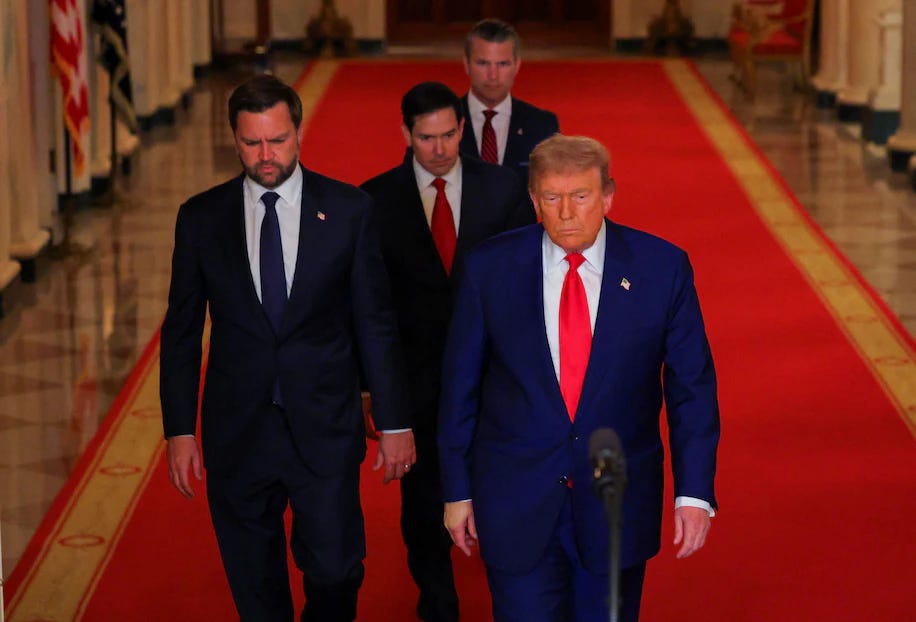Analysis: Trump's Attack On Iran Creates Multiple Crisis Points
Trump's decision to bomb Iran triggers the biggest escalation of risk for the United States since George W. Bush's quagmire-plunging invasion of Iraq
In a formal address to the nation from the White House, flanked by Vice President JD Vance, Secretary of State Marco Rubio and Defense Secretary Pete Hegseth, Trump declared: "Tonight, I can report to the world that the strikes were a spectacular military success. Iran's nuclear enrichment facilities have been completely and totally obliterated."
Trump's objective was "the destruction of Iran's nuclear enrichment capacity" to stop "the nuclear threat posed by the world's number one state sponsor of terror." But his victory declaration was immediately coupled with ominous warnings of escalation:
"There are many targets left," Trump warned Iran. "Tonight's was the most difficult of them all by far, and perhaps the most lethal. But if peace does not come quickly, we will go after those other targets with precision, speed and skill. Most of them can be taken out in a matter of minutes."
On Truth Social, Trump issued an even starker ultimatum: "Any retaliation against the United States WILL BE MET WITH FORCE FAR GREATER THAN WHAT WAS WITNESSED TONIGHT."
Trump concluded by saying there will "be either peace or there will be tragedy for Iran" if an agreement is not reached, adding: "There's no military in the world that could have done what we did tonight. Not even close."
The timing reveals Trump acted alone within his self-imposed two-week deadline, abandoning allies who had been working on diplomatic solutions. European officials meeting with Iranian representatives in Geneva just yesterday were reportedly blindsided by the unilateral American action.
What follows is a detailed threat analysis for paid subscribers:
Keep reading with a 7-day free trial
Subscribe to Narativ with Zev Shalev to keep reading this post and get 7 days of free access to the full post archives.



